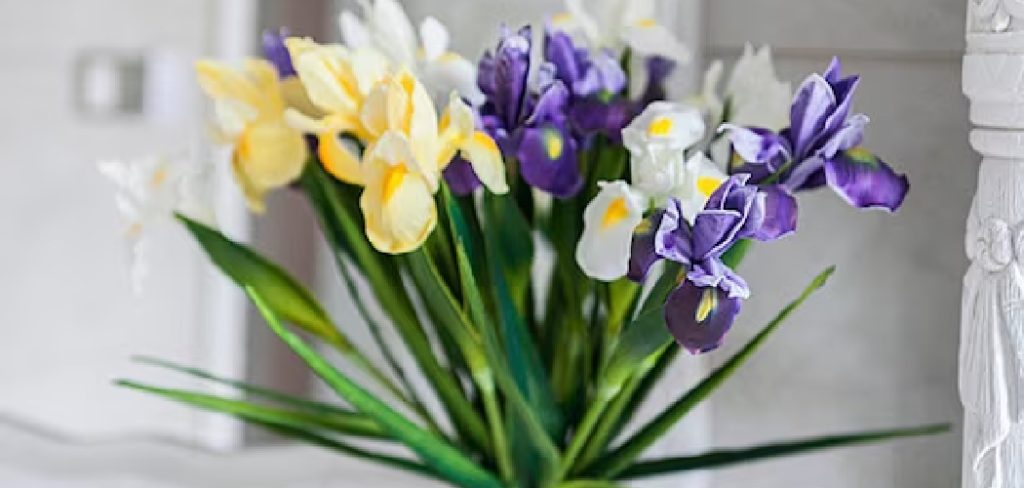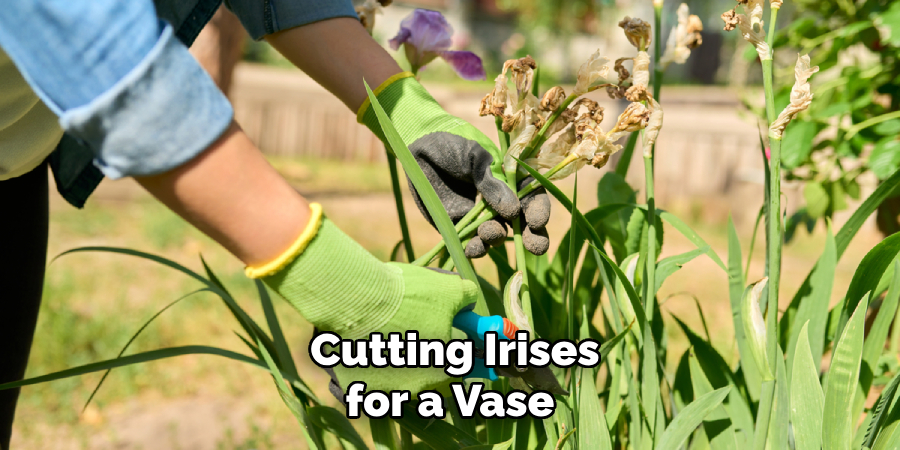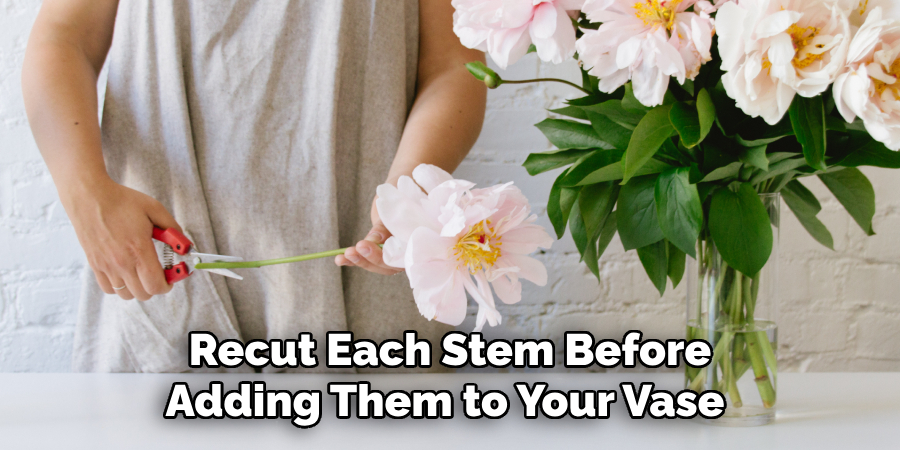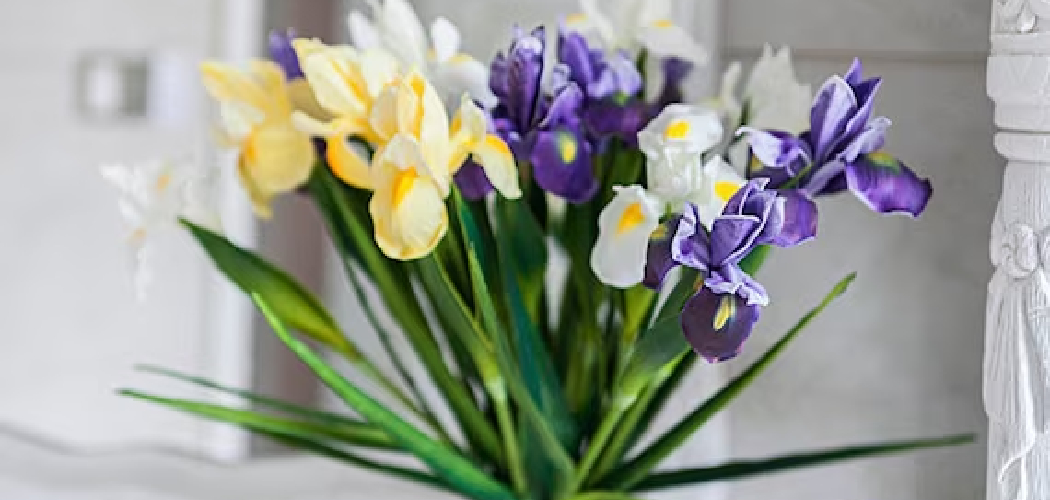Irises, with their striking colors and graceful petals, are a favorite choice for creating stunning floral arrangements. Whether you have a bountiful iris garden or you’ve received a bouquet of these beautiful flowers, knowing how to cut and arrange irises for a vase is essential to showcase their elegance.

While these flowers are relatively low-maintenance, a few simple techniques can help you extend their vase life and make the most of their unique beauty.
In this article, we will guide you through the process of how to cut irises for vase, from selecting the right blooms and timing to preparing the stems and arranging them in a way that highlights their splendor.
Whether you’re a seasoned florist or a budding enthusiast, mastering the art of iris arrangements will allow you to bring the charm of these captivating flowers indoors, adding a touch of sophistication to your decor.
The Beauty and Elegance of Irises in Floral Arrangements
Flowers have always been an important element in home decor and events, bringing color, fragrance and a touch of nature to our surroundings. Among the vast variety of flowers available, irises hold a special place for their unique shape, vibrant colors and elegant appeal. Often associated with royalty and wisdom, irises are not only beautiful but also have a rich history and symbolism.
In this document, we will explore the beauty and elegance of irises in floral arrangements, specifically focusing on how to cut and arrange them for a vase.
History and Symbolism of Irises
Irises have been cultivated since ancient times for their ornamental and medicinal purposes. They are native to Europe, Asia, and North America and have been widely used in art, literature and mythology.
In Greek mythology, the goddess Iris was known as the messenger between gods and humans, often depicted with a rainbow or wings. The word iris itself comes from the Greek word “rainbow”, referring to the vibrant colors of these flowers.
In addition to their mythological significance, irises also hold symbolic meanings in different cultures. For instance, in Japan, irises are believed to bring good fortune and protect against evil. In ancient Egypt, they were associated with the god Horus and were used in funerary arrangements.
10 Methods How to Cut Irises for Vase
1. Cut at an Angle
When cutting irises for a vase, it is important to cut them at an angle. This will help the stems to absorb more water and keep the flowers looking fresh for longer. To do this, hold the stem firmly in one hand and use a sharp pair of scissors or garden shears to make a clean cut at a 45-degree angle. Make sure to cut the stem just below a node (the point where two leaves meet).

2. Remove Lower Leaves
Once you have cut the stem, it is important to remove any lower leaves that may be present. Lower leaves can rot quickly when submerged in water, which can cause bacteria and fungi to form and affect the longevity of your flowers. To remove the leaves, gently pull them off with your fingers or use scissors if necessary.
3. Add Preservative
Adding a commercial flower preservative to your vase water is an important step in helping your flowers last longer. Flower preservatives typically contain sugar and acidifiers which help keep bacteria from forming in the water and provide nutrients for the flowers. Simply mix the preservative with warm water according to package instructions before adding it to your vase.
4. Recut Stems
You should also recut each stem before adding them to your vase of water. This will help ensure that each stem has an open end so that it can properly absorb water and stay hydrated throughout their lifespan. To do this, simply re-cut each stem at an angle as described above, making sure not to cut too close to any nodes on the stem as this can damage them.

5. Trim Excess Foliage
It is also important to trim any excess foliage from each stem before placing them into your vase of water. Excess foliage can block light from reaching some parts of the flower, which can lead to premature wilting or discoloration over time. To trim foliage, simply use scissors or garden shears to snip off any leaves that are below the water line in your vase or blocking light from reaching other parts of the flower head itself.
6. Use Clean Vases
Using clean vases is essential when arranging irises for display in your home or office space, as dirty containers can harbor bacteria which can cause flowers to wilt prematurely or become diseased over time. Before adding irises into a container, make sure that it has been thoroughly cleaned with warm soapy water and rinsed well with clear tap water before adding fresh lukewarm tap water mixed with flower preservatives as described above.
7. Place Flowers Upright
When placing irises into a vase of water, it is important that they are placed upright so that their stems are evenly submerged in order for them to receive adequate hydration throughout their lifespan without any air pockets forming around their stems, which could cause them to dry out prematurely causing wilting or death of petals over time.
8. Change Water Regularly
To ensure optimal health of your irises, it is important that you change the vase water regularly every 2-3 days by pouring out all existing solution and replacing it with fresh lukewarm tap water mixed with flower preservatives as described above.

This will help prevent bacteria from building up within the container, which could cause harm or death of petals over time due to its growth rate being faster than what most flowers are capable of handling.
9. Keep Out Of Direct Sunlight
Irises should be kept out of direct sunlight whenever possible as too much exposure can cause petals on some varieties to become discolored or even burn while others may start wilting prematurely due to lack of hydration caused by intense heat evaporating existing solution within its container faster than what most flowers are capable of absorbing.
10. Check For Pests Regularly
Lastly, it is important that you check for pests such as aphids regularly on both stems and petals alike, as these insects have known for sucking vital nutrients out of plants causing premature wilting or death if left unchecked over extended periods of time. If pests are detected, then they should be removed immediately, either manually using tweezers or sprayed using natural insecticides available from local gardening stores nearby.
Things to Consider When Cutting Irises for Vase
There’s no denying the beauty of irises when arranged in a vase. Their tall, elegant stems and vibrant colors make them a popular choice for floral arrangements. However, cutting irises for a vase can be tricky if you’re not familiar with the process. Here are some things to consider when preparing your beautiful irises for display.
1. Choose the Right Time
When it comes to cutting irises, timing is crucial. Ideally, you should cut them early in the morning when they’re fully hydrated and at their freshest. This will ensure that your irises last longer once arranged in a vase.
2. Select Healthy Stems
Before cutting your irises, make sure to inspect the stems for any signs of damage or disease. Healthy stems should be firm and have a straight appearance. Avoid cutting irises with wilted or discolored stems, as this could indicate that they are already starting to deteriorate.
3. Use Sharp Tools
When it’s time to cut your irises, be sure to use sharp tools such as pruning shears or a sharp knife. Dull tools can crush the stems, making it difficult for the flowers to absorb water and nutrients. It’s also important to make clean cuts at a 45-degree angle to prevent crushing and allow for better water absorption.

4. Consider Stem Length
The length of your irises’ stems is another crucial factor to consider when cutting them for a vase. Generally, you should cut the stems at an angle that is about 1-2 inches longer than the height of your vase. This will allow for the necessary support and water absorption while also giving your arrangement a balanced look.
Conclusion
Despite the wide range of flower shapes available to put in a vase, cutting irises so that they contribute to the overall aesthetic effect is an important skill for any avid flower arranger.
Cut your irises with a sharp knife or garden shears, making sure to cut all of them at once for uniformity. Make concentric semicircles by removing cleanly from the center outwards and place each stem in individual vases since their leaves may overlap if grouped together.
Be sure to trim off any unwanted foliage as you go and enjoy the beauty that a statice filled vase can bring! Try out these tried-and-tested tips on how to cut irises for vase now and add to your collection of gorgeous floral creations. Remember—when it comes to flower arrangements, practice makes perfect!


